According to this answer the issue is that imsave normalizes the data so that the computed minimum is defined as black (and, if there is a distinct maximum, that is defined as white).
This led me to go digging as to why the suggested use of uint8 did work to create the desired output. As it turns out, in the source there is a function called bytescale that gets called internally.
Actually, imsave itself is a very thin wrapper around toimage followed by save (from the image object). Inside of toimage if mode is None (which it is by default), that's when bytescale gets invoked.
It turns out that bytescale has an if statement that checks for the uint8 data type, and if the data is in that format, it returns the data unaltered. But if not, then the data is scaled according to a max and min transformation (where 0 and 255 are the default low and high pixel values to compare to).
This is the full snippet of code linked above:
if data.dtype == uint8:
return data
if high < low:
raise ValueError("`high` should be larger than `low`.")
if cmin is None:
cmin = data.min()
if cmax is None:
cmax = data.max()
cscale = cmax - cmin
if cscale < 0:
raise ValueError("`cmax` should be larger than `cmin`.")
elif cscale == 0:
cscale = 1
scale = float(high - low) / cscale
bytedata = (data * 1.0 - cmin) * scale + 0.4999
bytedata[bytedata > high] = high
bytedata[bytedata < 0] = 0
return cast[uint8](bytedata) + cast[uint8](low)
For the blocks of your data that are all 255, cscale will be 0, which will be checked for and changed to 1. Then the line
bytedata = (data * 1.0 - cmin) * scale + 0.4999
will result in the whole image block having the float value of 0.4999, thus set explicitly to 0 in the next chunk of code (when casted to uint8 from float) as for example:
In [102]: np.cast[np.uint8](0.4999)
Out[102]: array(0, dtype=uint8)
You can see in the body of bytescale that there are only two possible ways to return: either your data is type uint8 and it's returned as-is, or else it goes through this kind of silly scaling process. So in the end, it is indeed correct, and good practice, to be using uint8 for the pieces of your code that specifically load from or save to an image format via these functions.
So this cascade of stuff is why you were getting all zeros in the outputted image file and why the other suggestion of using dtype=np.uint8 actually helps you. It's not because you need to avoid floating point data for images, just because of this bizarre convention to check and scale data on the part of imsave.


